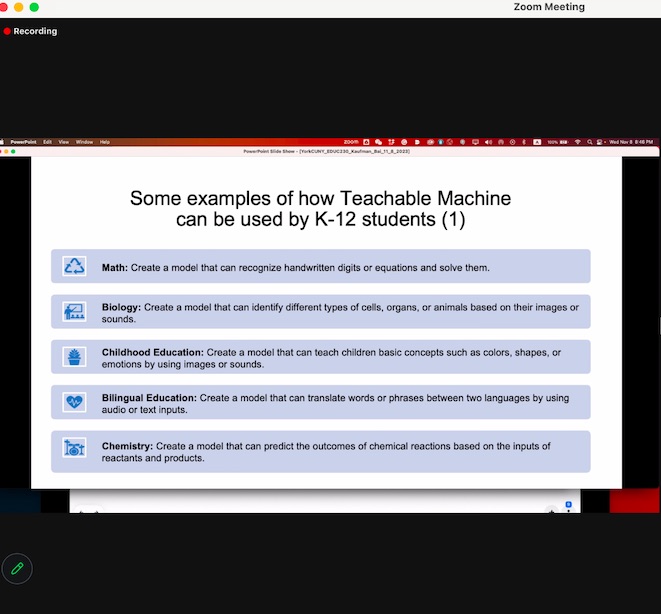Students attending an evening class at the City University of New York attempt to persuade the artificial intelligence site chatGPT to debate with them on important issues in education. By day, these students are teachers, representing a diverse group of educators across the K-12 system in New York City.
The course they’re taking via Zoom, Teaching with Multimedia Technology, led by Professor Xin Bai, is a part of the Computing Integrated Teacher Education (CITE) program that CUNY first announced in late 2022. Bai is professor of educational technology in the Department of Teacher Education at York College in Queens.
The program is a four-year, $14 million, initiative to incorporate cutting-edge computer technology education for both current and future teachers of pre-K through 12th grade. The program is being implemented at Queens, Brooklyn, York, and Staten Island colleges, as well as Hostos Community College here in Mott Haven.
“Our students represent their future students coming from similar communities with similar resources,” says Bai. “If they feel more comfortable and have self-efficacy regarding current technology, they will be the early adopters of new technologies,” she said.
Throughout the semester, Bai’s class covers topics including cybersecurity, digital and physical computing, 3D modeling, and data-driven curriculum design.
CUNY is the largest public university system in the United States and currently has 243,000 enrolled students. Over 60% of those students are students of color. Currently, Black and Hispanic New Yorkers comprise 43% of the city’s workforce but account for just 21% of those employed in the tech sector.
Since 2007, employment in tech has grown 160% in the five boroughs. The Center for an Urban Future, an independent think tank, is working with CUNY schools to ensure that all New Yorkers, regardless of their economic background, have access to this expanding field.
Eli Dvorkin, the center’s editorial and policy director, spoke with the Herald to elaborate on their efforts to bring tech equity to the Bronx. The think tank’s mission is to research policies that reduce inequality, increase economic mobility, and grow the economy
“CUNY is arguably the most powerful engine of economic mobility that we have as a city to help New Yorkers achieve long-lasting career success and economic success at an affordable cost,” he said.
“In many ways, the answer is to start at the beginning of a person’s education and embed computing education in our K-12 system,” said Dvorkin.
According to the Center for an Urban Future, If the CITE program expands to reach every student in CUNY’s teacher education programs, an estimated 1,670 teachers hired by New York City’s public schools every year could reach more than 40,000 students annually.
Angela, a student in Bai’s class and a working second-grade teacher, shared that she is in the program primarily to better understand modern technology herself. “I’m trying to find things I feel comfortable using myself and apps that are more applicable for kids as well,” she said.
At the end of Bai’s three-hour class, which was interactive and involved both hands-on and multimedia exercises, she asked her students to share how comfortable they felt now using the technology she presented. Ten of the 17 teachers-in-training said they felt improvement.
Data from graph provided at the end of class
Bronx Borough President Vanessa Gibson has said that bringing technology and education to the Bronx is at the forefront of her agenda, and she has backed that up with funding. In the 2023-2024 fiscal year, Gibson has allocated almost half of her budget to fund 123 education projects, for a total of $20,952,000 – 75 of which focus on technology.
“A lot of this work is about access, opportunity, and education,” said Gibson at a tech equity forum hosted in the Bronx by the Center for an Urban Future in October.
At the forum, Gibson claimed her office is in very ambitious talks with Montefiore Einstein regarding bringing the first-ever STEM school to the Bronx.

